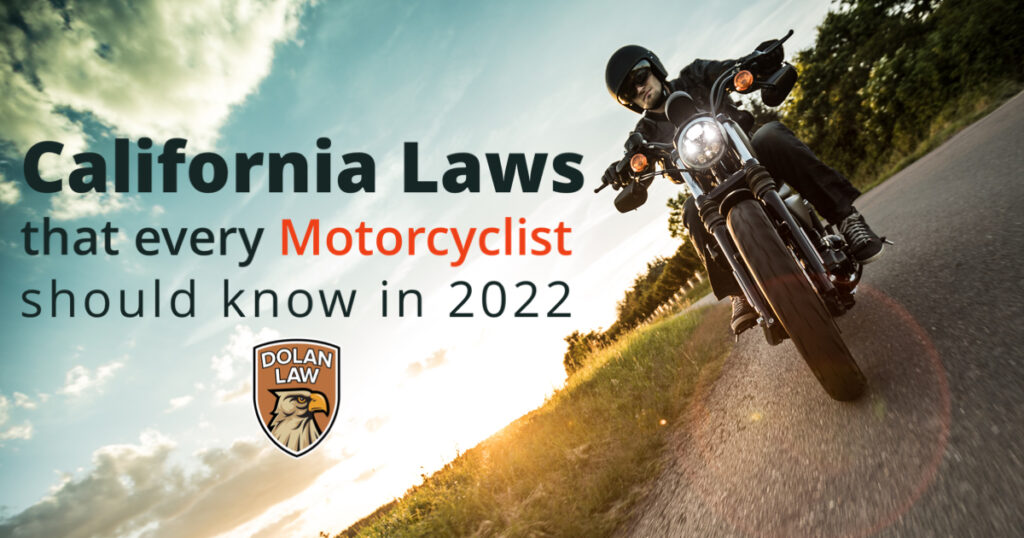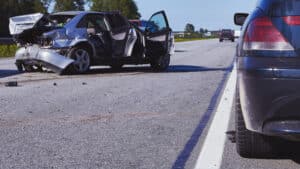Written By Chris Dolan and Cioffi Remmer
This week’s question comes from Anonymous who asks: I am thinking of getting a Motorcycle. What are the rules for operating motorcycles on the road here in California?
Dear Anonymous,
Thanks so much for your question. Since the pandemic, California roadways are seemingly returning to normal (i.e., traffic). Couple that with the end of remote learning and back-to-school, and ‘tis the season to be stuck in traffic. As motorcycles whiz by the rest of us trapped in bumper-to-bumper traffic, some see danger in the two-wheelers, while others see inspiration.
If you’re one of the inspired, Section 12500(b) of the California Vehicle Code requires a valid driver’s license or endorsement to drive a motorcycle. Section 12804.9(b)(4) specifies that the motorcycle driver’s license (Class “M1”) may be granted by endorsement on a class A, B, or C license upon completion of an appropriate examination.
Examination
As an initial matter, you must be 21 years of age to obtain an M1 license or endorsement in California. However, if you provide evidence of completing a “novice motorcycle safety training program,” the D.M.V. may make an exception. (Cal. Veh. Code § 12804.9(i)).
In all cases, an M1 license applicant must take an examination. The examination consists of a driver knowledge test, a motorcycle knowledge test, and a motorcycle skills test. All these tests must be passed before California issues the M1 license or endorsement. A “Certificate of Completion of Motorcycle Training” may help you avoid taking the motorcycle skills test, but the knowledge tests will still be required. (Cal. Veh. Code § 12804.9(g)).
Insurance
The same financial responsibility laws that apply to motor vehicles apply to motorcycles. California requires insurance to operate a motor vehicle on the roadways. Currently, the law requires a minimum of $15,000 for injury/death to one person, $30,000 for injury/death to more than one person, and $5,000 for property damage. (Cal. Veh. Code § 16020, et seq.) Failure to provide evidence of financial responsibility can result in a fine of up to $750.
Is Lane Splitting Legal in California?
YES. Lane Splitting is LEGAL in California. Section 21658.1(a) of the Vehicle Code defines lane splitting as
“driving a motorcycle…that has two wheels in contact with the ground, between rows of stopped or moving vehicles in the same lane, including on both divided and undivided streets, roads, or highways.”
Under subsection (b), the California Highway Patrol developed educational guidelines relating to lane splitting in a manner that would ensure the safety of motorcyclists and the drivers and passengers of the surrounding vehicles. To wit, the CHP has created several guidelines, lane splitting tips for motorcyclists, and guidelines for other vehicles.
Some of the key guidelines for motorcyclists include:
- The danger increases as overall speed increases.
- It is typically safer to split between the far-left lanes than between the other lanes of traffic.
- Riding on the shoulder is ILLEGAL; it is not considered lane splitting.
Some of the key messages for drivers of other vehicles include:
- Lane splitting by motorcyclists is legal in California.
- Drivers in the far-left lane should move to the left of their lane to give motorcyclists ample room to pass.
- Intentionally blocking or impeding a motorcyclist in a way that could cause harm to the rider is illegal.
Helmets
All drivers AND passengers on motorcycles must wear a safety helmet that meets specific requirements established in the vehicle code. It is illegal to operate or ride as a passenger on a motorcycle (including a motor-driven cycle). Cal. Veh. Code § 27803.
The helmet MUST meet Federal Motor Vehicle Safety Standard No. 218 (codified under 49 C.F.R. Sec. 574.218). This means that the helmet must be approved by the U.S. Department of Transportation. This standard lays out specific design elements related to helmets worn to protect the user from injury. The federal standard lays out threshold expectations that must be tested using particular means and parameters to ensure uniform testing methods. Moreover, section 27802 of the Vehicle Code specifies that it is illegal to sell or use motorcycle helmets that do not meet these requirements.
Many attempts to repeal California’s helmet laws or limit them have failed. California stands steadfast in its commitment to motorcycle driver and passenger safety. As a potential rider, so should you.
For more information, guidelines, and tips, please consult the California Highway Patrol’s Website at: https://www.chp.ca.gov/programs-services/programs/california-motorcyclist-safety










